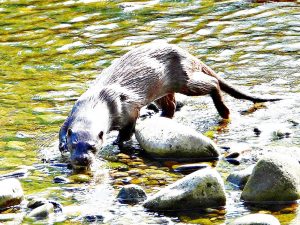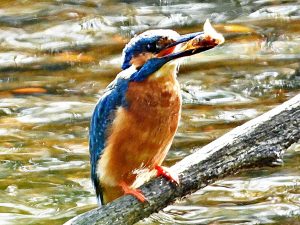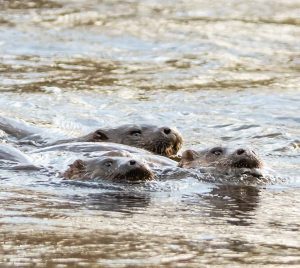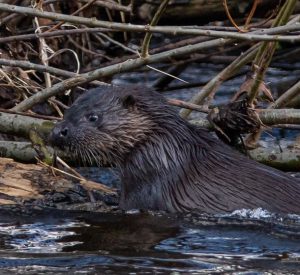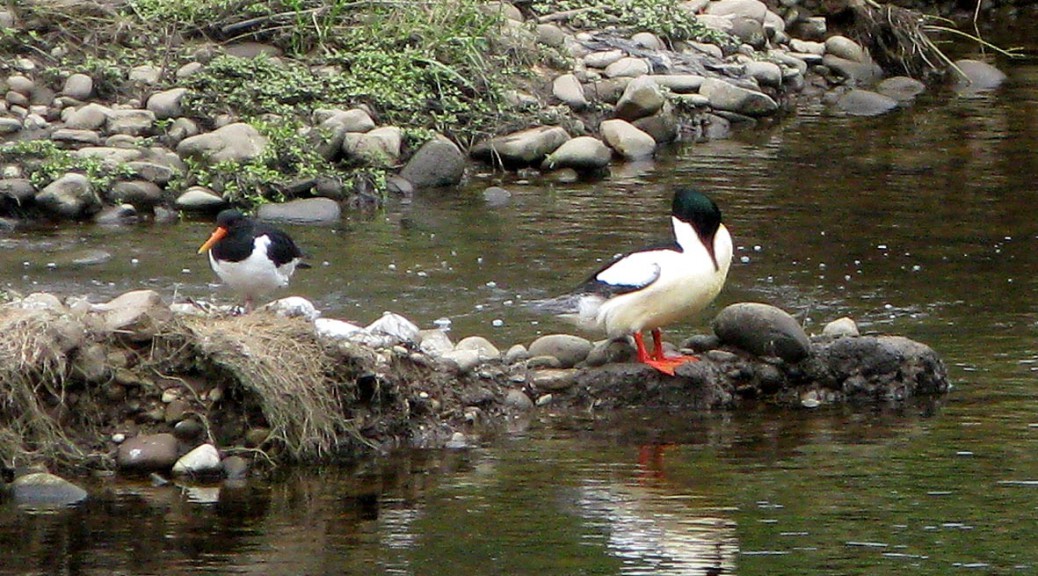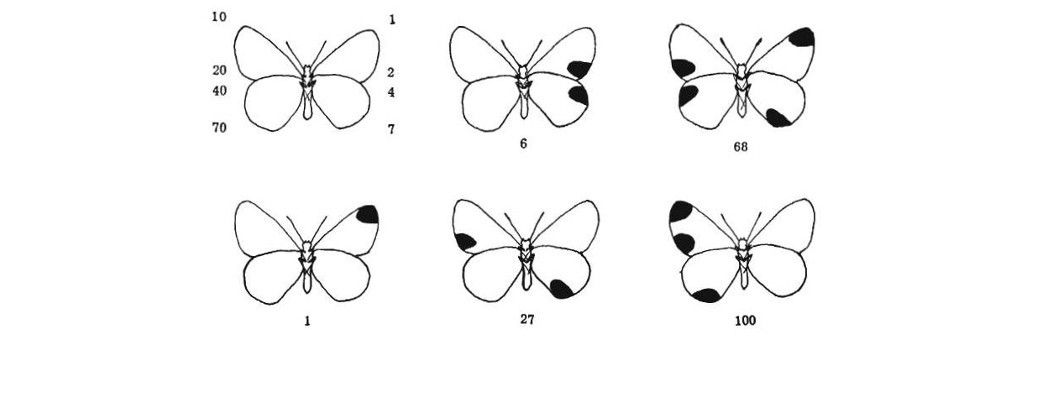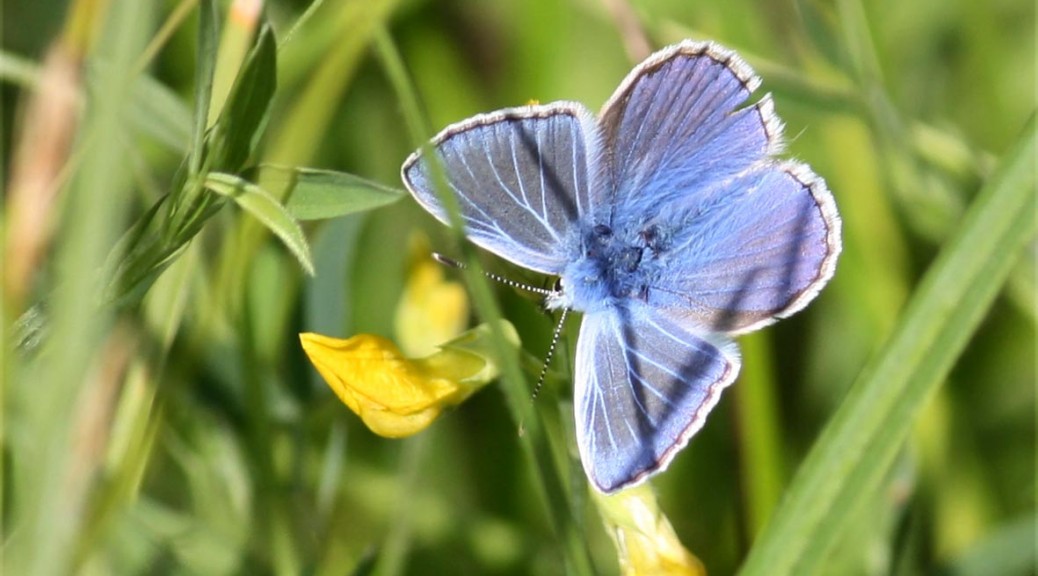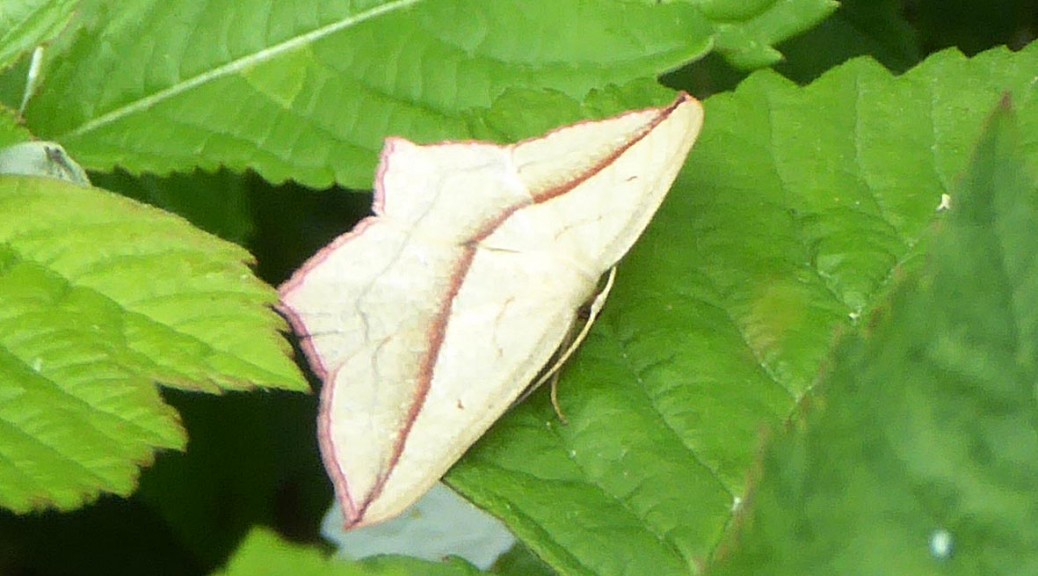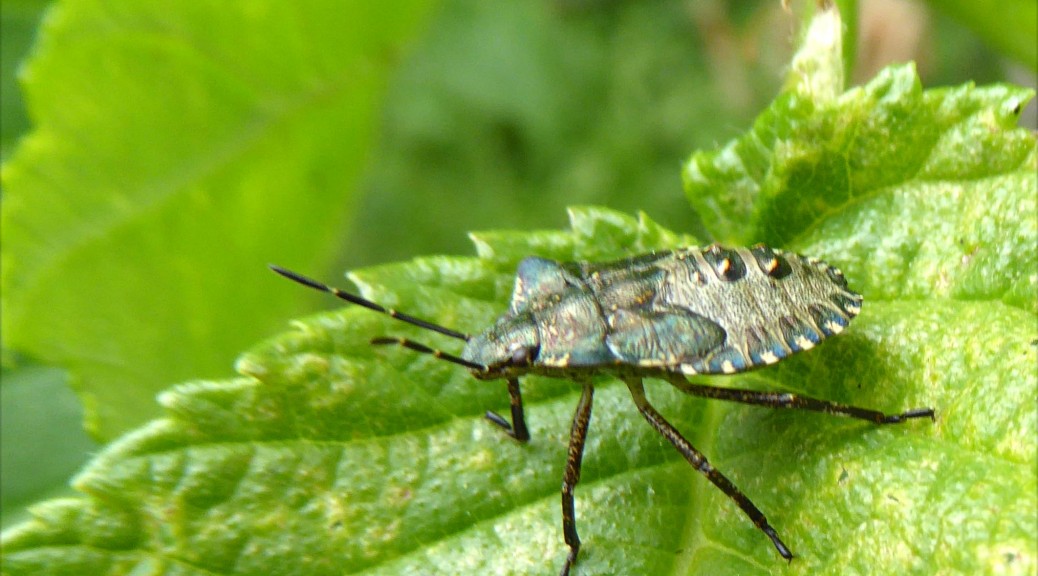The secret to spotting otters is to go birdwatching and wait for a kingfisher to appear. That’s what Frank Munkes a regular visitor to the reserve did on Monday morning with stunning results. I believe we have here a male kingfisher eating a stickleback and a dog otter that includes the this section of the wharfe in its territory. Its the best otter photo I’ve seen taken at the reserve. Thanks for sharing Frank
Category Archives: Wildlife sightings
Spring Otters 2021
Otter Family Aug 19
A big thank you to Dave Varney for sharing these photos with us. We have what appears to be a family group, a mother and 2 youngsters though it’s difficult to see any size difference between them? There is however a sad ending, these photos were taken on Aug 20th 2019, a few weeks later ( see earlier post) an otter was run over a killed on the road nearby. It’s highly likely it was one of the youngsters here.
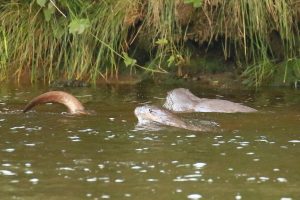
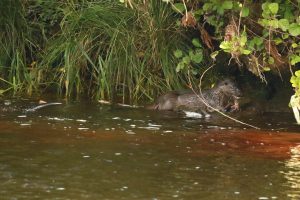
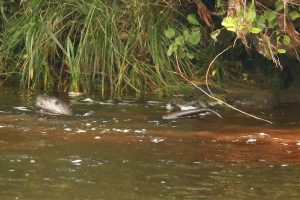
Workgroup Highlights Jan 13th Egret and Woodcock
A new year and and a resolution to post news more frequently!
Very few birds on the reserve, today, we had hoped for some winter thrushes but with few hawthorn berries it was perhaps no surprise. However what we lacked in quantity we made with quality. Checking out the effectiveness of some of the glade creation we did about 4yrs ago I flushed out a woodcock from the woods. The bird flew fast and silent out of the trees in a NE direction. BRGP isn’t a site you would anticipate seeing a woodcock, but this small woodland is reasonably wet and there are other woods in the vicinity. Our native birds are also joined by large numbers from Russia and Finland so increasing the odds of disturbing a bird. I believe this is a first for the reserve!
We were delighted for our first view of little egret for the year. The bird was initially 200 m distant at first – in the vicinity of the small beck that runs into the river about half way along the reserve. Fortunately for us it was disturbed by 1 of 3 red kites which kept harassing it for about 5 minutes drawing it until eventually flew along the river. I mentioned the sighting to a dog walker, who visits the reserve frequently – usually in the evening. He remarked that he had seen the egret roosting in a tree over the lagoon on a few occasions- something I will definitely follow up in particularly when the evenings start getting a bit lighter
The other notable sighting was a weasel which ran along the riverside path ( I have seen them before up near the entrance
Steve Parkes
8 April – Sand Martins & Butterflies
35 plus sand martins pairing up and exploring nest holes were the highlight of our saturday work group. Other birds included singing blackcap and chiffchaff and pair of kingfishers. A newly emerged orange tip was joined by over wintering brimstone, comma, peacock and small copper butterflies
Gravel pits ducks
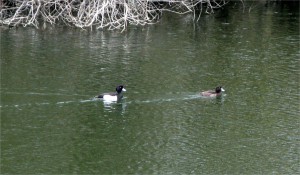
The Gravel Pits is a good place to spot some of the less common ducks. The featured image shows a male Goosander preening itself ,next to an Oyster catcher, the far side of the river. Some of the lagoons attract other species such as this pair of Tufted ducks, seen this afternoon. They are slightly smaller than than a mallard and their distinctive yellows eyes can be seen in the photo on the right. The male is all black apart from white flanks and the female is brown with paler flanks. They are thought to feed on a mixture of plant matter, molluscs and insects.
How long do butterflies typically live?
This is an interesting question. On recent visits to the reserve, the same Common Blue butterfly has been sighted on numerous occasions, usually in the same spot. We are pretty sure it is the same butterfly as it has a nick in it’s wings at a specific place and it seems to have been there for the best part of a month. One of the methods of determining the longevity of butterflies is the ‘Mark-Release-Recapture’ technique; butterflies captured in a net and given a unique number by a series of dots that are added to their underwings using paint or a special type of marker pen (see the featured image: 1-2-4-7 marking system; Ehrlich and Davidson, 1960). Like the nick in the wings of our Common Blue, it gives you a way of identifying an individual and if enough are marked it is possible to build up sufficient information to create an estimate of longevity. If the same individual is recaptured at a later date the days that have elapsed between it’s marking date and the last capture date can be recorded. This technique can also be used for studying dispersal of butterflies (their flight characteristics).
On studying a colony of Silver Studded Blue butterflies in North Wales the longest period between first and last captures I found was 26 days, for a female. The average period between first and last captures was just over 3 days. Maybe one day we will be able to fit tiny tracking devices to butterflies but for the moment this is still a commonly used technique. How longevity varies between species is another question, but our Common Blue is still there after a month and it is looking in surprisingly good condition!
12th July 2015 sightings
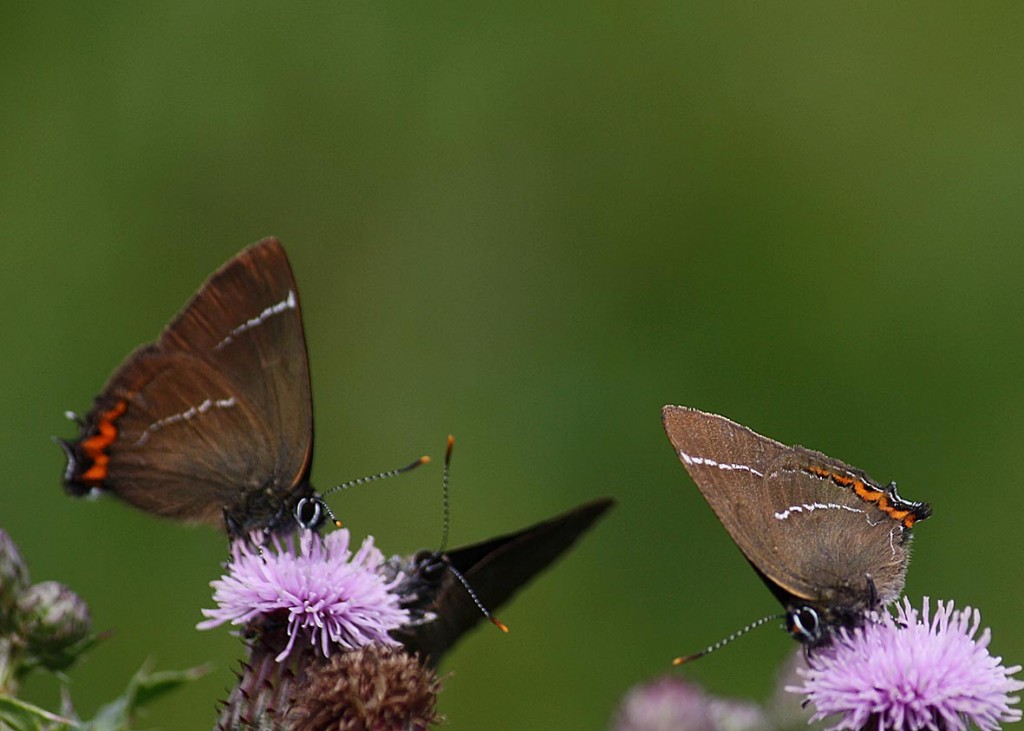
After our work party, on the 11th July, we were wondering whether the White Letter Hairtreaks had emerged yet, but the following day confirmed they are back in good numbers. They still seem to like to sit on the Creeping Thistles, down near the drainage ditch (near the bench), but have also been sighted near the other end of the site, quite close to the entrance at times. As well as Creeping Thistle, they have been spotted sitting on Ragwort and nettles. An elm tree, by the metal gate, seems to be the food plant of the larvae, on the first lawn.
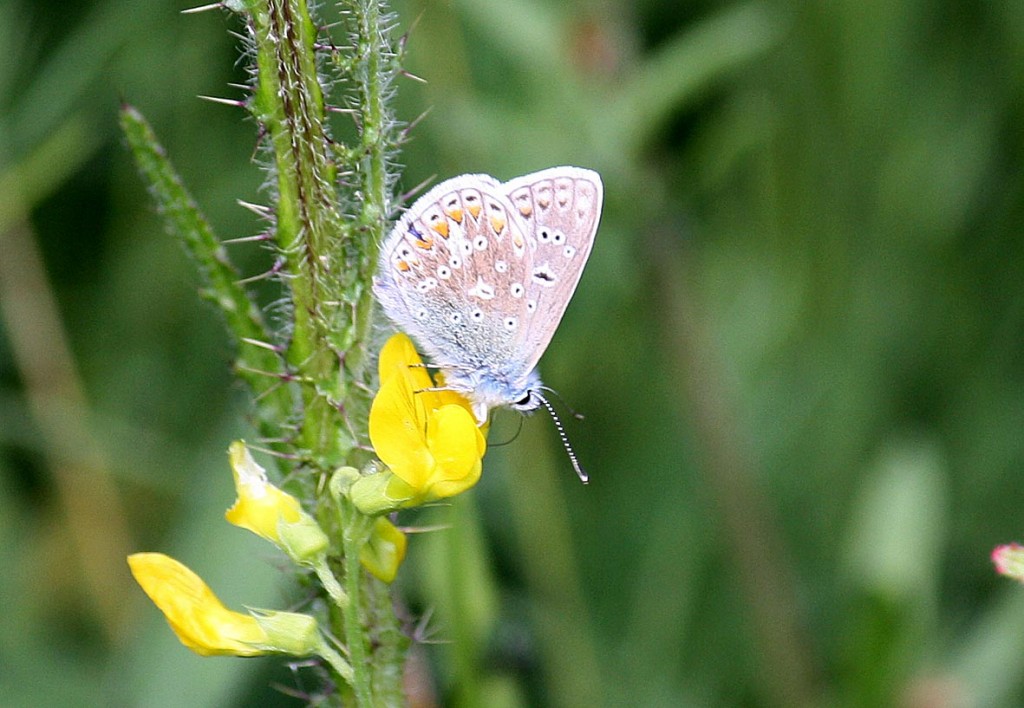
We have noticed what we thought was Common Birdsfoot Trefoil (Lotus corniculatus) at the site and were hoping this could spark a resurgence of Common Blue butterflies. On a recent visit by the Bradford botany group, the Common Blue in this picture was actually found on Meadow Vetchling (Lathyrus pratensis), also known as Meadow Pea. Other plants, used by the Common Blue include: Greater Bird’s-foot-trefoil (L. pedunculatus), Black Medick (Medicago lupulina), Common Restharrow (Ononis repens), White Clover (Trifolium repens) and Lesser Trefoil (T. dubium). We are hoping to receive a species list from the botanist’s visit so hopefully this will give us some more information.
Blood vein moth
A Blood vein moth was spotted today….
Elm bug
This bug was found on one of the elm trees yesterday. There was more than one of these creatures although none today. If anyone knows what it could be please let us know.

